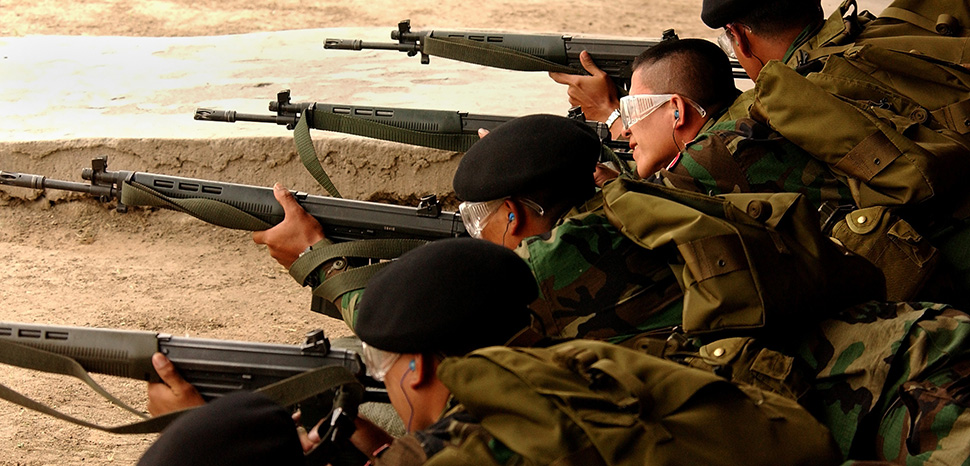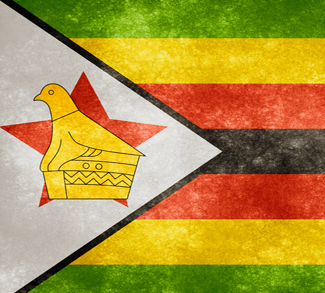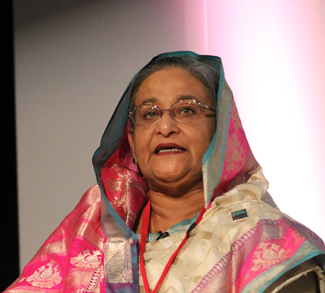Formerly regarded as one of Latin America’s safest countries, the recent uptick in violence has seen Ecuador descend into a maelstrom. These developments would be no surprise to those who have monitored Ecuador’s declining situation over recent years. Statistics reveal an unprecedented increase in the murder rate from 6.9 deaths per 100,000 inhabitants in 2019 to 26.7 in 2022. Mirroring the events of past decades elsewhere in Latin America, the proliferation of violence across Ecuador is the result of transnational drug cartels. With it being half a century since the initiation of the War on Drugs, and with no apparent end in sight, has the broader campaign against the cartels become a forever war?
Recent Events
Ecuadorian President Daniel Noboa was elected in October 2023. The campaign was overshadowed by an unprecedented level of political violence in which presidential candidate Fernando Villavicencio was assassinated 11 days before voting began. Since assuming office, Noboa has taken a hard-line approach to tackling the cartels, which included the decision to move drug kingpins to maximum security facilities. Demonstrating the need for such a policy, on the 7th of January, notorious drug lord and leader of the Los Choneros cartel Jose Adolfo Macias Villamar (also known as “Fito”) escaped from La Regional prison. Serving a 34-year sentence for drug trafficking, extortion and murder, Macias was due to be moved to a maximum-security prison just days later.
This is not the first time Macias has broken out of prison, having previously escaped from La Roca in 2013 before being recaptured. Latin America has a history of drug kingpins escaping incarceration, with Joaquin ‘El Chapo’ Guzman and Pablo Escobar being other notable examples. One day after Macias’ most recent disappearance, Fabricio Colón Pico, the leader of the rival gang Los Lobos, escaped from another prison along with 31 other inmates. Chaos ensued in prisons across Ecuador, resulting in over 200 guards and administrative staff being taken hostage in at least 7 prisons. Then, on the 9th of January, 13 armed men grabbed the world’s attention when they stormed the set of TC TV station in Guayaquil during a live broadcast.
With Ecuador in turmoil, President Noboa declared a 60-day countrywide state of “internal armed conflict,” designated over 20 narco-gangs as terrorist groups and ordered the military to neutralize them. He reaffirmed his stance in an Instagram message, promising to “bring back peace to all Ecuadorians.” Since then, security forces have secured the safe release of all but one of the prison hostages and arrested the 13 assailants following the TC TV incident. However, the cartel’s preparedness to weaponize terror was demonstrated again on Wednesday the 18th of January, when the investigating prosecutor for the TC TV attack was shot dead in Guayaquil. Noboa’s war against the cartels will be a challenging and lengthy undertaking, with retaliatory violence a given and success by no means guaranteed.
History
The illicit drug trade gained prominence in Latin America in the 1960s and 70s, namely in Bolivia, Colombia, and Peru. Domestic concerns soon arose in the United States (US) as a result of increasing drug consumption, the association between narcotics and the counterculture movement, and the narrative that conflated drugs with crime. In a press conference on the 17th of June 1971, President Nixon responded by proclaiming the start of the War on Drugs.
Despite this declaration of war, throughout the 1980s, the Colombian Medellin and Cali cartels enjoyed a period of sustained growth and began to expand their cocaine production and distribution networks. Large quantities of cocaine subsequently flooded into US and international markets. Competition between rival gangs led to turf wars characterized by assassinations, bombings, and kidnappings. Violence swept across Latin America and domestic drug use surged in destination countries. The Reagan administration then amplified the War on Drugs by adopting a multi-pronged approach aimed at curbing substance abuse and tackling drug traffickers. Nancy Reagan’s “Just Say No” campaign sought to discourage drug use by promoting personal responsibility and resisting peer pressure. Stricter penalties were implemented for drug offences, Drug Enforcement Agency (DEA) funding was increased, and assistance was given to Latin American countries.
Over half a century since the War on Drugs started, its efforts have largely failed. This is made even more apparent when you consider the idealistic objectives set out by the international community. At the 1998 United Nations General Assembly, policymakers boldly outlined the target of a “drug-free world” by 2008. By overly prioritizing punitive measures and overlooking root causes, the War on Drugs maintained a steady course towards failure.
For instance, despite successfully dismantling the major Colombian cartels in the 1990s, relentless international demand led to the emergence of new criminal organizations. The most prominent examples are the Mexican Sinaloa and Jalisco New Generation Cartels. Demonstrating greater versatility compared with their predecessors, these groups are renowned for trafficking cocaine, methamphetamine, heroin, and cannabis.
To consolidate their dominance and expand operations, sophisticated transnational networks were established across numerous countries. Ecuador’s incorporation into this network partly stemmed from the viability of overland transport facilitated by its shared borders with Colombia and Peru, the world’s two greatest cocaine producers. As the world’s largest exporter of bananas, Ecuador’s ports are also ideal for hiding cocaine in huge shipping containers. Ecuador’s lack of infrastructure for dealing with the cartels, which is the result of their historic absence from the country, could also have made it an attractive prospect to drug traffickers.
Moving Forward
Transnational cartels represent an extremely complex problem for policymakers. To stand any chance of success, there is a need for a cohesive and integrated multilateral strategy. However, the regional cooperation necessary for such action is currently lacking. With the cartels operating across much of Latin America, the long list of countries involved makes it challenging to present a united front. This is illustrated by the liberal approach adopted by Colombian President Gustavo Petro, whose administration has overhauled drug policy and reduced the eradication of coca plantations. With Colombian cocaine production rising to a record 1,738 tonnes in 2023, Petro’s approach has worried policymakers in Washington.
There is also a risk of corruption undermining cooperative efforts. A prominent example of this has been the damaging legacy of former Ecuadorian President Rafael Correa, who is currently imprisoned on corruption charges. Correa struck a peace agreement with the cartels, expelled a US anti-narcotics base, and ended cooperation with the DEA.
Notwithstanding the above difficulties, a transnational threat necessitates a transnational response and authorities should not be dissuaded. The absence of an overarching strategy stands to benefit the cartels.
Tactically speaking, emphasis should be given to the root causes of the illicit drugs market including the economic principles of supply and demand. As supplying narcotics requires resources such as coca farms and manpower, policies targeted at these areas have a higher likelihood of a lasting impact.
There is also a need to integrate the realities revealed by research and learn necessary lessons from past policy mistakes. For instance, despite being popular amongst the electorate, numerous studies have proven that using military assets to reduce the supply of narcotics is “ineffective and conducive to the intensification of violence.” Removing one cartel simply creates a power vacuum that is soon filled by another. A more pragmatic method would be to address the prevalent socioeconomic problems of poverty and unemployment that drive cartel recruitment. With 43.5% of Mexico’s population living in poverty in 2022, drug cartels have capitalized on people’s desperation by targeting vulnerable individuals. Cartels collectively employ a staggering 175,000 people in Mexico, making them the fifth largest employer in the country. Unfortunately, the endemic nature of Latin America’s socioeconomic issues renders the challenge of resolving them a formidable one. Nevertheless, it would be pertinent for policymakers to recognize that investing in people’s opportunities has a higher probability of working in the long term.
The demand dimension in consumer countries is also an important consideration in the fight against cartels. By reducing the market for illicit drugs, these groups will suffer from revenue losses and the reduced capacity to fund terror campaigns. However, achieving this will require a major domestic drug policy rethink. Punitive enforcement-led policies involving criminalization and mass incarceration can no longer be justified. Despite a lack of evidence to support a causal relationship between criminalizing drug consumption and reducing availability or use, the notion of a deterrence effect continues to underpin the strategies of many governments.
The political risks of being associated as weak on drugs could explain why only a handful of developed countries have looked to alternatives to criminalizing drugs. This is unfortunate as numerous studies have proven the utility of reallocating resources towards strategies such as education, rehabilitation, and support. Public attitudes are an important variable in this political equation, accentuating the need to spread awareness of the facts surrounding what works and what does not.
Concluding Remarks
The ongoing war against the cartels exhibits several of the traits of a “forever war.” However, policymakers should not be fatalistic. Parallels between deteriorating events in Ecuador and those of past decades in other parts of Latin America highlight the need for a renewed approach in the countries impacted by the War on Drugs. This article has identified several changes that could be implemented to weaken the cartels, illustrating that there is a potential way forward. Nevertheless, on balance, it is difficult to be optimistic about the prospects of progressive policies coming to fruition and permanently removing the cartels. Overcoming an unconventional enemy demands progress on several fronts. This is made difficult by political hurdles and the preoccupation of key players such as the US with other more pressing geopolitical developments. Regrettably, in all probability, the cartels are here to stay.
The views expressed in this article belong to the authors alone and do not necessarily reflect those of Geopoliticalmonitor.com.




